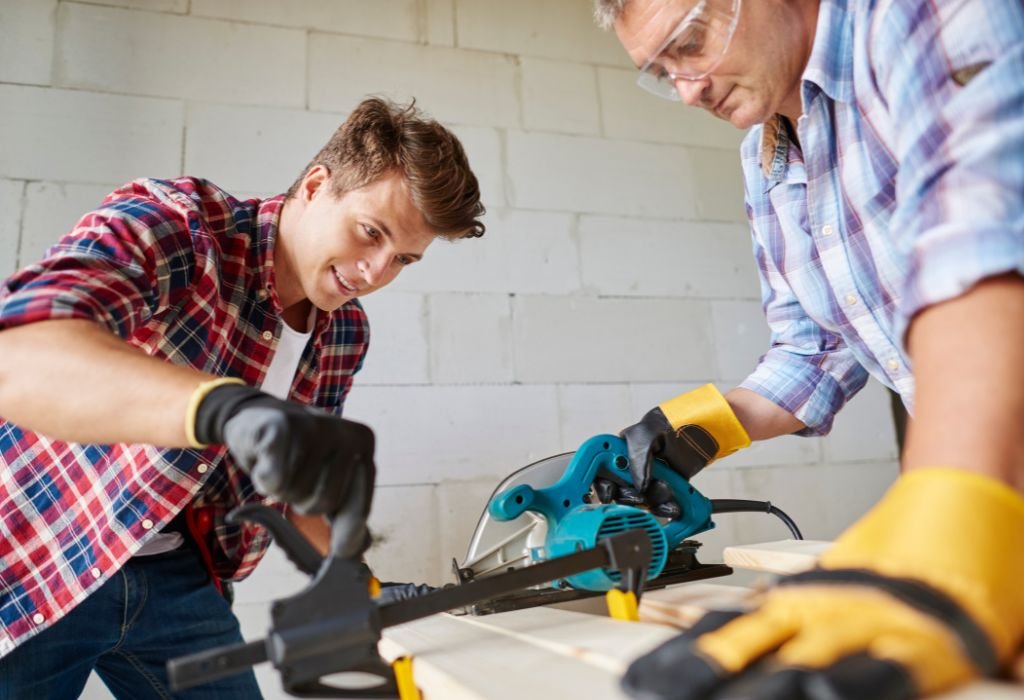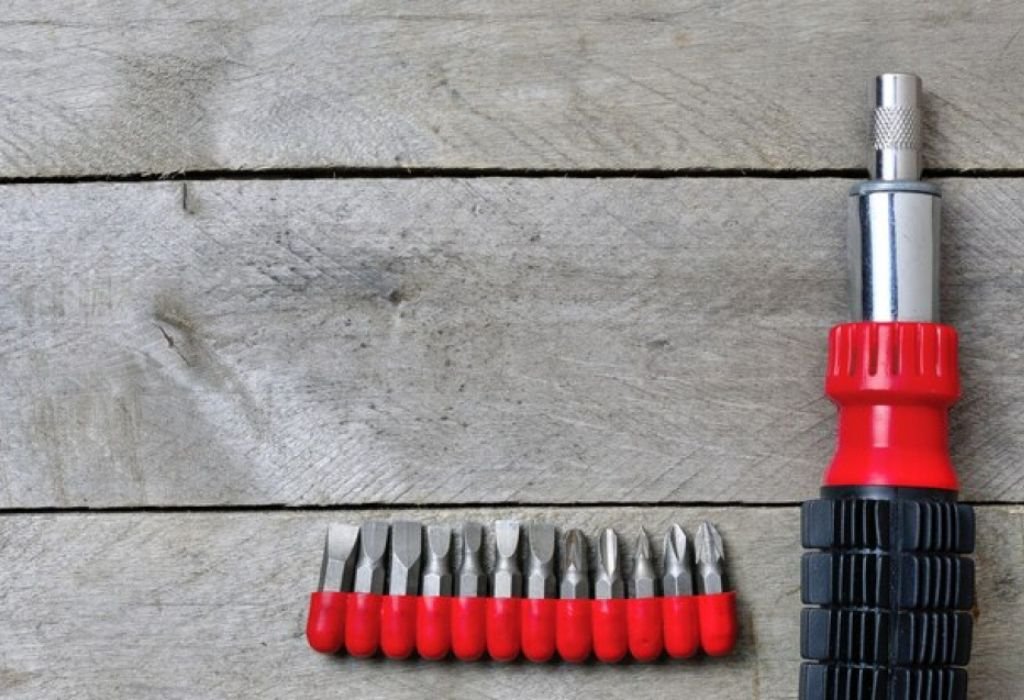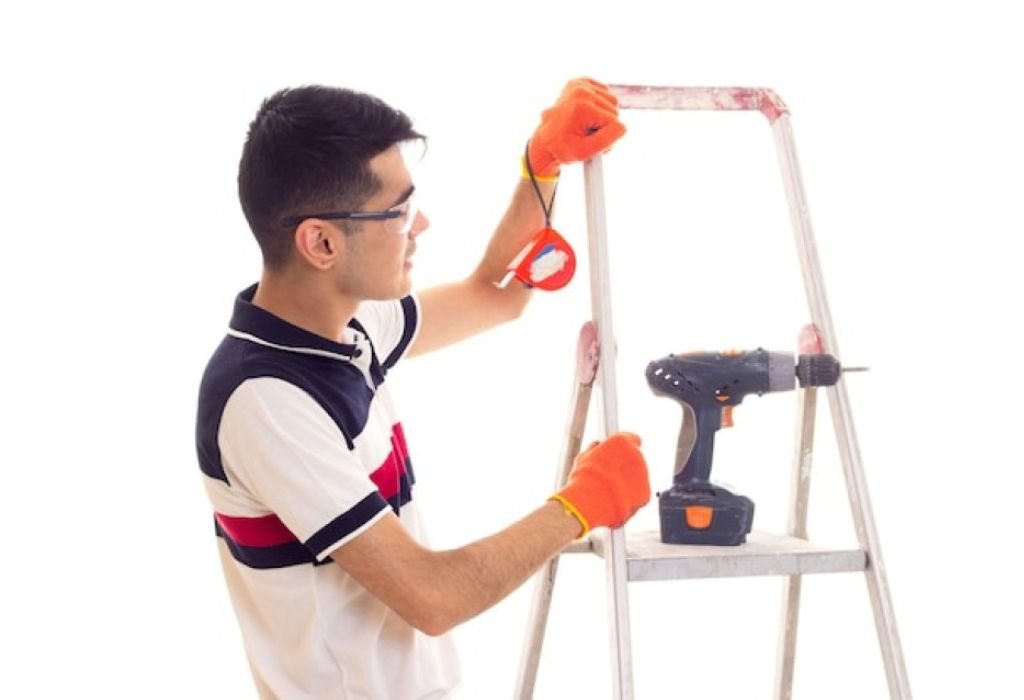A home project can go smoothly until the first screw slips, the bit spins out, and the head strips beyond repair.
This frustrating moment is what leads many to question whether their tools are suited for the task at hand.
An impact driver looks similar to a drill but behaves very differently.
Instead of applying steady rotation, it delivers rapid bursts of torque that help the bit bite into the screw head.
These bursts reduce cam-out, the common slip that damages both fastener and bit, especially with long or stubborn screws.
For many DIYers and professionals, this feature is the reason impact drivers have become a standard tool in modern toolkits.
The numbers back it up. While a typical drill/driver produces 400–600 in-lbs of torque, most modern impact drivers deliver 1,500–2,300 in-lbs, along with 3,000+ impacts per minute (Pro Tool Reviews).
This extra force makes them faster, more efficient, and easier on the wrist during demanding fastening jobs. In fact, tests show that impact drivers consistently drive more screws per battery charge compared to standard drills (The Spruce).
Yet raw power does not automatically make them the perfect screwdriver substitute. Precision tasks like cabinetry, electronics, and delicate trim work still demand a tool with clutch control.
This is why the question — can an impact driver be used as a screwdriver? — deserves more than a simple yes or no.
This guide explores the differences, advantages, limitations, techniques, and safety tips for using an impact driver in place of a screwdriver.
Impact Driver vs. Drill/Driver — What’s the Actual Difference?

At first glance, an impact driver and a drill look almost identical. The real difference lies in how they deliver power to the screw.
A drill/driver applies smooth and continuous rotation. It also includes a clutch that lets users set torque levels for precise control, making it safer for delicate screws.
An impact driver, however, uses rotational impacts. These are bursts of torque combined with high impacts per minute that seat the bit firmly in the screw head.
This design makes the impact driver more effective at preventing cam-out. It also helps drive long screws or bolts into dense wood with less effort.
Unlike drills, impact drivers use a 1/4-inch hex collet. This quick-change system accepts only hex-shank bits and ensures they stay locked during heavy fastening.
The result is a tool that excels at power and efficiency but sacrifices fine torque control. Understanding this difference is key before deciding whether to use an impact driver as a screwdriver.
Can an impact driver act like a screwdriver?
Yes, with the right bit and careful trigger control, it can drive screws effectively.
Why is a drill/driver more precise for small screws?
Its clutch allows torque adjustment, preventing overtightening and protecting fragile fasteners.
What makes impacts better for long screws and dense lumber?
The pulsing torque reduces resistance, seating the screw with less slipping or stripping.
What shank do impact drivers use?
They accept 1/4-inch hex-shank bits only, unlike drills that use round shanks.
Do impacts reduce wrist strain compared to drills?
Yes, the pulsed action spreads force, lowering kickback during demanding fastening tasks.
When You Should Use an Impact Driver as a Screwdriver
Impact drivers shine in heavy-duty fastening. They are ideal for deck building, framing, fencing, and long construction screws.
They also work well for driving lag bolts with a socket adapter. The pulsed torque can even loosen corroded screws and bolts that a drill cannot handle.
These tools are faster than drills for repetitive fastening. Contractors often report driving hundreds of screws more efficiently per charge with an impact driver.
Will an impact driver strip screws more or less than a drill?
Less likely if the bit is seated; impacts help prevent cam-out.
Is it faster for bulk fastening?
Yes, impacts consistently drive screws faster and with better battery efficiency.
Can it remove corroded screws?
Yes, the percussive action often breaks static friction.
What size screws benefit most?
Long deck screws, structural fasteners, and self-drilling screws in metal are perfect candidates.
Is it suitable for outdoor construction?
Yes, the torque output makes it a go-to tool for exterior building projects.
When You Should Not Use an Impact Driver as a Screwdriver
There are times when an impact driver is not the right choice. Precision tasks demand a tool with better torque control.
Cabinetry, electronics, and trim work can be damaged by the aggressive force of an impact. A drill/driver with clutch or a manual screwdriver is safer for these jobs.
Is an impact driver safe for tiny screws?
No, it can overtighten and damage them.
What about drywall and trim?
Use a drill/driver with clutch to avoid overdriving and breaking surfaces.
Can precision modes help?
Yes, some impacts have low-speed settings, but they are still risky for delicate work.
Will an impact damage brittle materials?
Yes, its torque pulses can crack or deform fragile surfaces.
Is it safe for electronics assembly?
No, always use tools with controlled torque for sensitive parts.
Bit and Accessory Essentials for Using an Impact as a Screwdriver

The right accessories make all the difference. Impact-rated bits are designed to flex under load and resist snapping.
Standard bits may work, but they wear out faster. Always choose bits labeled “impact-rated” for safety and longevity.
Do regular driver bits work?
They may, but impact-rated bits last longer and resist breakage.
What is cam-out and how do bits help?
Cam-out is bit slippage; quality bits and correct head types reduce it.
Can I use socket adapters for lag bolts?
Yes, but they must be impact-rated to handle high torque.
Do I need pilot holes?
Yes, especially in hardwoods and metals, to prevent splitting and improve accuracy.
Can I use hex-shank drill bits in an impact driver?
Yes, but only if they are impact-rated for durability.
Setup and Technique — Drive Screws Like a Pro
Technique determines how effective an impact driver is. Start on low speed and align the bit squarely with the screw.
Feather the trigger until impacts begin. Maintain steady pressure and release as soon as the screw seats.
What RPM/IPM settings should I start with?
Use low or medium modes for better control.
How to reduce cam-out?
Keep firm axial pressure and stop as soon as the screw is snug.
Should I pre-drill in metal or dense wood?
Yes, it reduces resistance and ensures cleaner finishes.
How do I avoid over-driving?
Use the lowest mode or stop driving once the fastener seats.
Can a beginner control an impact driver easily?
Yes, with practice and proper bit choice, it becomes intuitive.
Safety, Ergonomics and Battery Tips
Impact drivers are powerful and require safe handling. Always wear eye protection and keep bits seated fully.
Brushless models are more efficient and reduce heat during heavy use. Battery life is often longer compared to drills when driving screws.
Does an impact reduce wrist strain?
Yes, its pulsed torque lessens sudden twist.
Brushless vs. brushed for screwdriving?
Brushless delivers longer runtime and smoother control.
How to maximize runtime?
Use medium modes and maintain healthy batteries.
How do I prevent bit breakage?
Use impact-rated bits and avoid side-loading.
Is overheating common?
Less so in brushless models, but always allow cool-down in continuous use.
Buying Guide — Features That Matter if You’ll Use It as a Screwdriver
Not all impact drivers are created equal. Features make a big difference for those using them as screwdrivers.
Look for multiple speed modes, compact size, and torque in the 1,500–1,800 in-lb range. This balance ensures versatility without unnecessary power.
How much torque is enough for most users?
Around 1,500–1,800 in-lbs is sufficient for general fastening.
Are four-mode drivers worth it?
Yes, they provide greater flexibility for both small and large screws.
Do published specs matter?
Yes, compare torque, RPM, and IPM together for true performance.
Any must-have accessories?
An impact-rated bit set, magnetic holders, and socket adapters.
Is compact size important?
Yes, smaller drivers fit tight spaces and reduce fatigue.
Advanced: Drilling With an Impact Driver (When You Must)

Impact drivers are not designed for drilling. However, with impact-rated hex-shank drill bits, they can perform basic drilling.
This is useful in wood and thin metal but less effective in masonry, tile, or thick steel.
Can an impact drill clean holes in metal?
Yes, but it is slower and harder on bits than a drill.
Is it suitable for glass or tile?
No, specialized drills are needed for fragile surfaces.
Do impact drill bits need a rating?
Yes, they must be impact-rated to avoid snapping.
Is pre-drilling necessary?
Yes, it improves accuracy and prevents damage.
Can I replace my drill completely with an impact?
No, impacts cannot match the drilling precision of a standard drill.
Summary — So, Can an Impact Driver Be Used as a Screwdriver?
The answer is yes, but with limitations. Impact drivers are excellent screwdrivers for medium to heavy fastening tasks.
They reduce cam-out, speed up work, and ease wrist strain. But they lack the fine torque control of drills, making them unsuitable for delicate tasks.
Best all-rounder setup?
Own both an impact driver and a drill/driver for full versatility.
One-tool choice?
Pick a multi-mode impact driver in the 1,500–1,800 in-lb class.
Top mistakes to avoid?
Using non-impact bits, skipping pilot holes, and over-driving fasteners.
Is an impact driver worth it for homeowners?
Yes, for general building, decking, and DIY it is a reliable investment.
Final advice?
Use the impact driver where strength and speed matter, and keep a drill for precision.

I’m John F. Nicholas, the founder, lead writer, and drill enthusiast behind 101drill.com. With years of hands-on experience in power tools and DIY projects, I created this platform to share practical knowledge, expert tips, and real-world insights to help others master the art of drilling.
